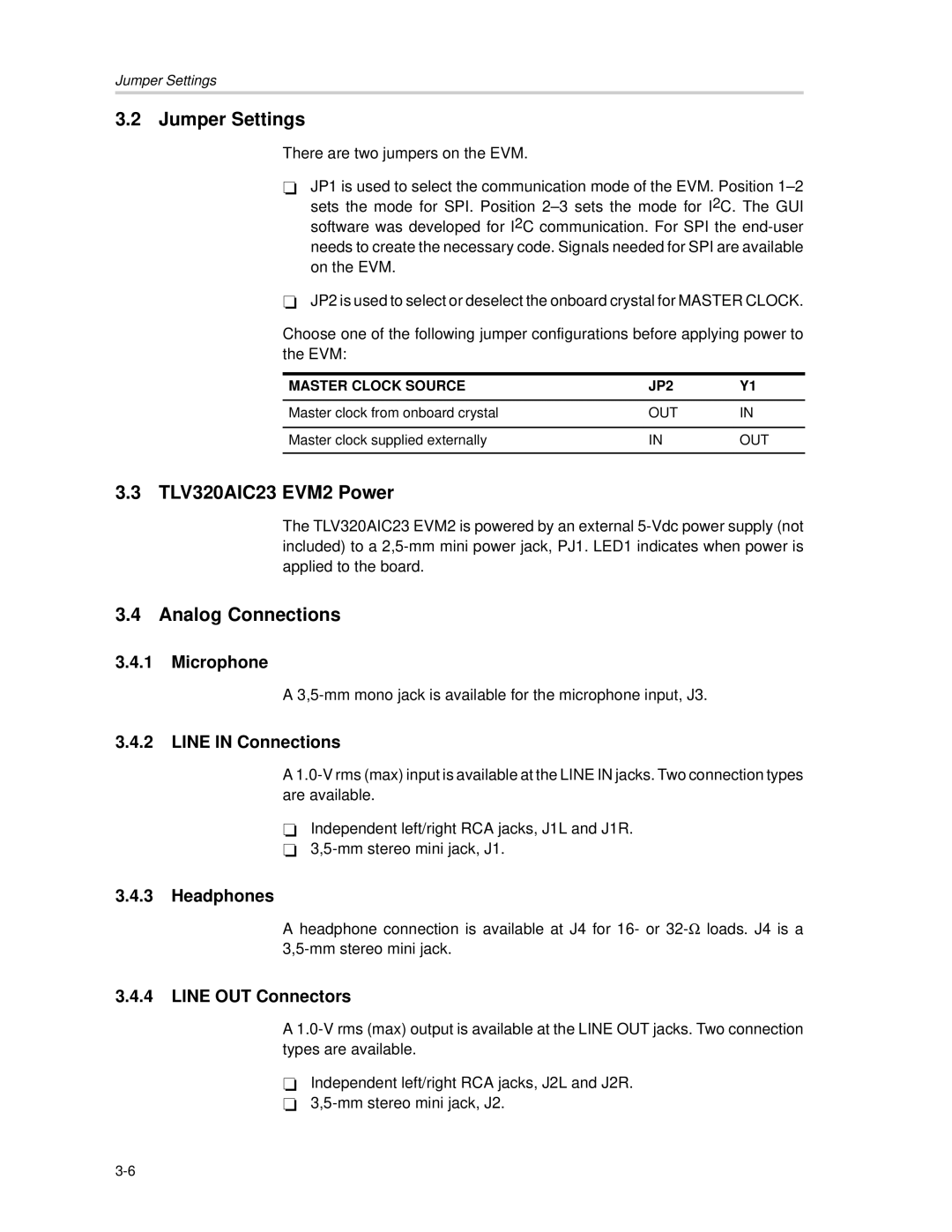
Jumper Settings
3.2 Jumper Settings
There are two jumpers on the EVM.
-JP1 is used to select the communication mode of the EVM. Position
-JP2 is used to select or deselect the onboard crystal for MASTER CLOCK.
Choose one of the following jumper configurations before applying power to the EVM:
MASTER CLOCK SOURCE | JP2 | Y1 |
|
|
|
Master clock from onboard crystal | OUT | IN |
|
|
|
Master clock supplied externally | IN | OUT |
|
|
|
3.3 TLV320AIC23 EVM2 Power
The TLV320AIC23 EVM2 is powered by an external
3.4 Analog Connections
3.4.1Microphone
A
3.4.2LINE IN Connections
A
-Independent left/right RCA jacks, J1L and J1R.
-
3.4.3Headphones
A headphone connection is available at J4 for 16- or
3.4.4LINE OUT Connectors
A
-Independent left/right RCA jacks, J2L and J2R.
-
